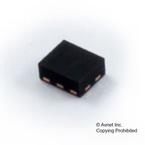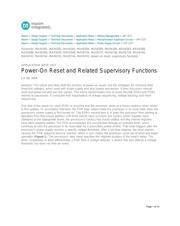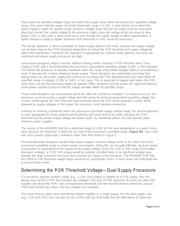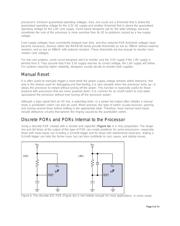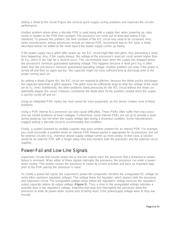herunterladen

Maxim > Design Support > Technical Documents > Application Notes > Battery Management > APP 3227
Maxim > Design Support > Technical Documents > Application Notes > Microprocessor Supervisor Circuits > APP 3227
Maxim > Design Support > Technical Documents > Application Notes > Power-Supply Circuits > APP 3227
Keywords: MAX6381, MAX6382, MAX6383, MAX6384, MAX6385, MAX6386, MAX6387, MAX6388,
MAX6389, MAX6390, MAX5039, MAX5040, MAX6736, MAX6737, MAX6738, MAX6739, MAX6740,
MAX6741, MAX6742, MAX6743, MAX6744, MAX6745, power-on reset, supervisory functions
APPLICATION NOTE 3227
Power-On Reset and Related Supervisory Functions
Jul 08, 2004
Abstract: This article describes both the function of power-on resets and the strategies for choosing their
threshold voltages, when used with single-supply and dual-supply processors. It then discusses manual
reset and power-fail and low-line signals. The article demonstrates why to avoid discrete PORs and PORs
internal to processors. It concludes with explanations of voltage sequencing, voltage tracking, and reset
sequencing.
One task of the power-on reset (POR) is ensuring that the processor starts at a known address when power
is first applied. To accomplish that task, the POR logic output holds the processor in its reset state when the
processor's power supply is first turned on. The POR's second task is to keep the processor from starting its
operation from that known address until three events have occurred: the system power supplies have
stabilized at the appropriate levels; the processor's clock(s) has (have) settled; and the internal registers
have been properly loaded. The POR accomplishes this second task through an onboard timer, which
continues to hold the processor in its reset state for a prescribed period of time. That timer triggers after the
processor's power supply reaches a specific voltage threshold. After a set time elapses, the timer expires,
causing the POR output to become inactive, which in turn makes the processor come out of reset and begin
operation (Figure 1). The processor's data sheet specifies the required duration of the timer's delay. The
timer, incidentally, is what differentiates a POR from a voltage detector, a device that also detects a voltage
threshold, but does not time an event.
Page 1 of 10

